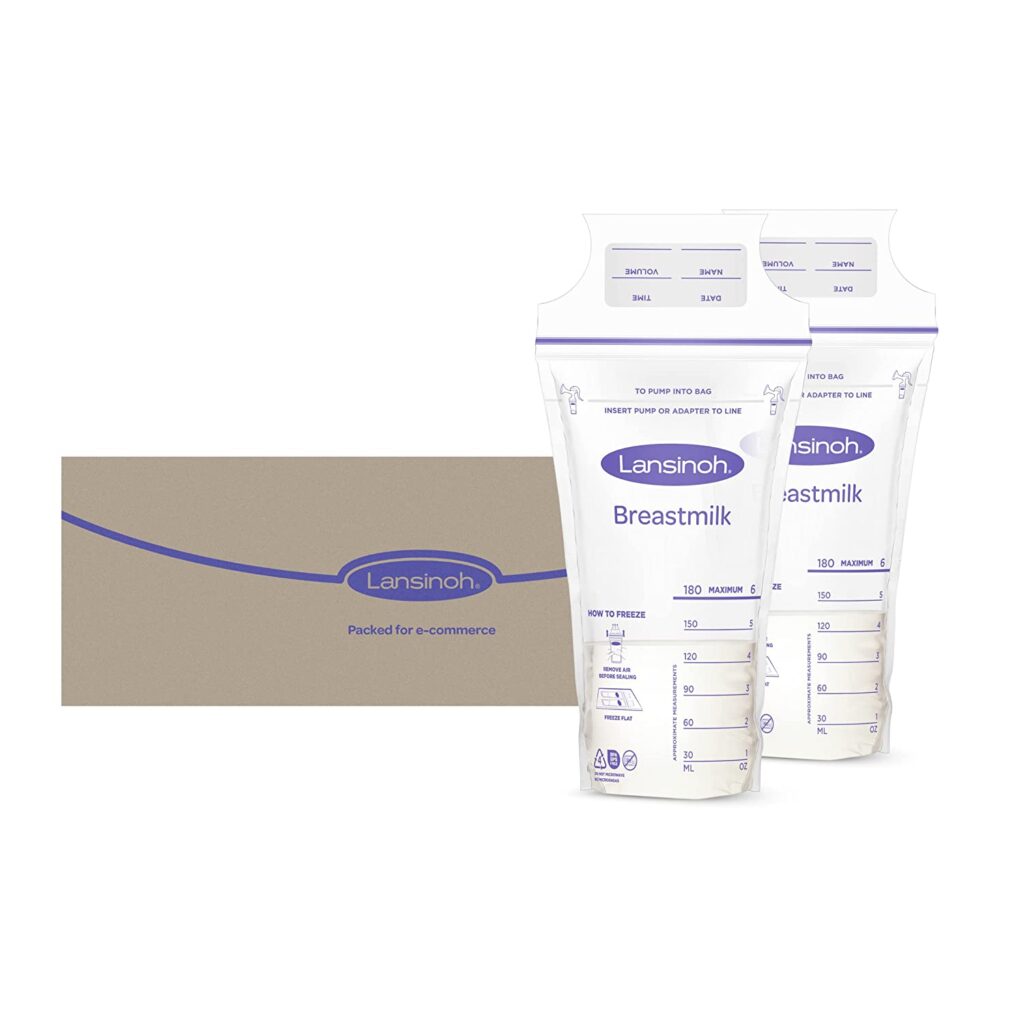
Breastfeeding is a beautiful and natural way to nourish your baby, creating a strong bond between mother and child. However, many new mothers experience the discomfort of sore nipples during their breastfeeding journey. Sore nipples can make breastfeeding a painful experience, but fear not! We are here to provide you with effective strategies to prevent and alleviate this common issue. In this comprehensive guide, we will explore various breastfeeding positions and offer essential tips to help you prevent swollen nipples, ensuring a more comfortable and enjoyable breastfeeding experience for both you and your baby.
Is it Normal to Have a Small Amount of Colostrum?
Yes, it is perfectly normal to have only a small amount of colostrum, which is the first milk that comes out of the breast. Most mothers start with just drops of this protein-rich milk that helps fight infection, providing crucial protection for newborns. Colostrum can have a bright yellow color due to its high beta carotene content.
During the first few days after birth, mothers typically produce a couple of drops to a few teaspoons of colostrum. As breastfeeding and pumping increase, the milk gradually transitions to a more translucent and watery appearance, known as transitional milk. By the second week, the milk becomes cloudy white as the body introduces more water into the milk. Breast milk is 87% water, ensuring that your little one gets enough hydration.While you may continue to see elements of colostrum for the first two weeks of breastfeeding, the composition of breast milk evolves to meet your baby’s changing needs, providing the carbohydrates and other essential nutrients required for their growth and development.
Will I Have Enough Milk for My Baby?
The majority of mothers have enough breast milk to exclusively breastfeed their baby for as long as their little one wants. In the United States, the typical duration of breastfeeding is 6-12 months, but in other parts of the world, it may extend up to 3-5 years.
Establishing breastfeeding as soon as possible after delivery contributes to successful breastfeeding and increased milk production. During the first week, the volume of breast milk rapidly increases to satisfy the baby’s hunger.
In general, a newborn will consume about 1 teaspoon of milk in the first 24 hours, and their milk intake doubles every day thereafter. As long as the child is being breastfed, the mother’s body will produce enough milk. However, as breastfeeding decreases over time, the amount of breast milk being produced will naturally start to decrease as well. This usually occurs when the child is being introduced to complementary foods, such as puréed fruits and vegetables.
Is Breastfeeding Painful?
Breastfeeding should not be painful, although there may be initial discomfort as both mom and baby get the hang of it. Once the baby is successfully latched onto the areola, their tongue and gums massage the milk ducts, which is the key to proper breastfeeding and milk production. An incorrect latch, such as latching onto the nipple instead of the areola, can lead to pain and potentially low milk production.
If you experience pain while breastfeeding, it is crucial to seek assistance from a lactation consultant or healthcare professional. They can help ensure that you and your baby are using the correct latch and positioning, which will greatly contribute to a pain-free and successful breastfeeding experience.
How Long Can I Store Breast Milk If I Use a Breast Pump?
If you are using a breast pump, it’s important to know how to properly store breast milk. At home, breast milk can be stored in the refrigerator for up to 5 days. If you plan to store it for a longer period, it can be kept in a standard freezer for 3-6 months or in a deep freezer for 6-12 months. When thawed, breast milk is good for 24 hours.
Amazon Best Seller

To maintain the freshness and quality of your breast milk, it’s advisable to store it in specialized breast milk storage bags, which are often provided with breast pumps. These bags typically have space to write the time and date when you pumped the milk, allowing you to easily keep track of its freshness.

How Long Should I Breastfeed For?
The American Academy of Pediatrics (AAP) recommends exclusive breastfeeding for the first 6 months, followed by continued breastfeeding as complementary foods, such as puréed fruits and vegetables, are introduced. The AAP further recommends continuing breastfeeding for 12 months or longer, as mutually desired by both mother and infant.
However, every mother and baby have their unique journey, and the duration of breastfeeding may vary. It’s essential to consider your own circumstances and consult with healthcare professionals to determine what works best for you and your baby.
If you find that you don’t have enough breast milk to exclusively breastfeed your baby, it is advisable to consult with your pediatrician. They can provide guidance on incorporating formula while ensuring that your baby receives the nutrition they need.
Vary Breastfeeding Positions for Optimal Comfort
One of the key strategies to prevent sore nipples is to diversify your breastfeeding positions. Using the same position consistently can lead to concentrated pressure on specific areas of the areola, resulting in soreness and tenderness. By experimenting with different positions, you can distribute the pressure more evenly and alleviate strain on particular areas.
There are several breastfeeding positions you can try, including the cradle hold, football hold, side-lying position, and laid-back position. Each position offers unique benefits and caters to different needs. By exploring and finding the positions that work best for you and your baby, you can significantly reduce the chances of developing sore nipples and enhance your overall breastfeeding experience.
Alternate Sides: A Balanced Approach
Another vital tip to prevent sore nipples is to alternate sides of the breast during each feeding session. By switching sides, you ensure that both breasts receive equal stimulation, reducing the risk of overuse on a single nipple. This balanced approach not only helps prevent pain but also allows each nipple time to heal and recover between feedings.
To keep track of which side you last used, a simple yet effective technique is to attach a safety pin to the strap of your nursing bra on the side you nursed from last. This visual reminder serves as a helpful cue, ensuring that you offer the correct breast first during the subsequent feeding session.
Harness the Healing Power of Breast Milk
Breast milk is not only a miraculous source of nutrition for your baby but also a valuable tool for preventing and soothing sore nipples. After each breastfeeding session, gently apply a few drops of your own breast milk to your nipples. Breast milk possesses natural properties that moisturize, protect, and promote healing in the delicate nipple area.
Allow the breast milk to air dry on your nipples, as this allows its healing properties to take effect. If you prefer using creams, opt for specially formulated products designed for sensitive breasts and nipples. Steer clear of creams containing paraffin preparations, as they may not provide the same benefits and could potentially hinder the healing process.
Maintain Dryness with Carefully Selected Pads
Maintaining dryness is crucial in preventing sore nipples. During breastfeeding, it’s recommended to use natural fiber pads between feedings to absorb any excess moisture. These pads help create an environment that minimizes the risk of irritation and chafing, promoting overall nipple comfort.
It’s important to note that using pulp pads made of cellulose tissues or toilet paper is not advisable, as they may adhere to your skin and cause potential skin injuries upon removal. Instead, opt for high-quality, natural fiber pads specifically designed for breastfeeding mothers. If the pad becomes wet, it’s recommended to change it as soon as possible to maintain optimal dryness and ensure maximum comfort.

Conclusion
Preventing sore nipples during breastfeeding is crucial for ensuring a comfortable and enjoyable experience for both mother and baby. By employing effective strategies such as varying breastfeeding positions, alternating sides, utilizing the healing properties of breast milk, and maintaining dryness with suitable pads, you can significantly reduce the risk of soreness and promote overall nipple comfort.
Remember, each breastfeeding journey is unique, and it may require some trial and error to find the techniques that work best for you and your baby. Don’t hesitate to seek guidance from lactation consultants or healthcare professionals if needed. With patience and perseverance, you can create a nurturing environment that strengthens the bond between you and your little one.




